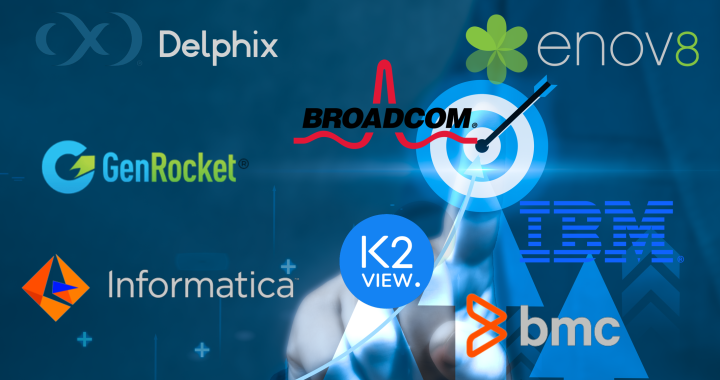Data Cloning, alternatively referred to as Database Virtualization, is a sophisticated technique that encompasses the process of capturing snapshots of authentic data, subsequently resulting in the creation of miniature, albeit fully functional and operational, replicas. These compact and efficient duplicates are subsequently and expeditiously provisioned into the designated Development and Test Environments, streamlining the process of testing and ensuring the integrity of the original dataset remains uncompromised.
The Cloning Process
There are four main steps:
- Ingest the Source Data
- Snapshot the Data
- Replicate the Data
- Provision the Data to new Environments
Behind the Scenes Cloning usually employs ZFS or HyperV technologies, which allow you to transition from traditional backup and restore methods that can take hours.
Utilizing ZFS or HyperV enables database provisioning to be 100 times faster and ten times smaller.
What is ZFS?
ZFS, short for Zettabyte File System, is a revolutionary file system that places a strong emphasis on data integrity, reliability, and ease of management. It was initially developed by Sun Microsystems and is now maintained as an open-source project. As a file system, ZFS not only guarantees data integrity by using advanced error detection and correction mechanisms but also supports snapshotting, a feature that allows for the efficient creation of point-in-time representations of the data stored within the system.
ZFS is unique in that it combines the roles of a traditional file system and a volume manager, which simplifies storage management tasks and reduces complexity. This integrated approach allows for advanced features such as data compression, deduplication, and the ability to create and manage storage pools. Furthermore, ZFS’s inherent copy-on-write functionality ensures that data is never overwritten, safeguarding against data corruption and enabling easy recovery in the event of an issue.
What is HyperV?
HyperV, also known as Microsoft Hyper-V or simply Hyper-V, is a virtualization technology developed by Microsoft that allows users to create, manage, and run multiple virtual machines (VMs) on a single physical host. This capability enables the efficient utilization of hardware resources, as multiple operating systems and applications can coexist and run concurrently on a single server. Hyper-V is an integral component of Microsoft’s Windows Server product line and is also available as a standalone product, known as Hyper-V Server.
One of the key features of Hyper-V is its support for snapshotting, which allows administrators to capture the state of a virtual machine at a specific point in time. These snapshots can include the VM’s memory, virtual disks, and hardware configuration. The snapshot functionality is particularly useful for tasks such as testing software updates, rolling back to a previous state in case of an error, or creating point-in-time backups for disaster recovery.
Problem Statement
Traditional backup methods often involve manual processes that can be time-consuming, taking hours or even days to complete. While these backups are in progress, the data being backed up is typically inaccessible, which can lead to significant operational challenges when immediate access to the data is necessary for ongoing business activities or critical decision-making.
Moreover, the storage requirements for these traditional backup and restore operations can be substantial. Since the process creates a full, 100% copy of the original source data, the storage demands can quickly escalate. For example, a 5 TB database would necessitate an additional 15 TB of disk space if three separate restore points were required. This considerable storage overhead not only adds to the overall cost of maintaining the backup infrastructure but also has implications for the time and resources needed to manage and maintain the storage environment.
Benefits of Data Cloning
Data Cloning involves generating a snapshot, or copy, of data for backup, analysis, or engineering purposes, either in real-time or as part of a scheduled routine. Data clones facilitate the provisioning of new databases and testing changes to production systems without impacting live data.
Advantages
- Clones can be employed for development and testing without affecting production data
- Clones consume minimal storage, averaging about 40 MB, even for a 1 TB source
- The Snapshot & Cloning process is completed in seconds rather than hours
- Clones can be restored to any point in time by bookmarking
- Simplifies end-to-end data management
Disadvantages
- The technology required for cloning can be complex
However, various user-friendly tools on the market can mitigate this complexity.
Data Cloning Tools
Besides building your own solution, commercial cloning options include:
- Delphix
- RedGate SQL Clone
- Enov8 vME (VirtualizeMe)
- Windocks
Each tool offers unique features and benefits. It’s crucial to understand your data environment and objectives before making a final decision.
Data Cloning Use Cases
- DevOps: Data cloning creates exact copies of datasets for backups or replicating test data in Test Environments for development and testing.
- Cloud Migration: Data cloning offers a secure and efficient method for transferring TB-size datasets from on-premises to the cloud, enabling space-efficient data environments for testing and cutover rehearsal.
- Platform Upgrades: Data virtualization reduces complexity, lowers total cost of ownership, and accelerates projects by delivering virtual data copies to platform teams more efficiently than traditional processes.
- Analytics: Data clones facilitate query and report design and provide on-demand access to integrated data across sources for BI projects without compromising the original dataset.
- Production Support: Data cloning helps teams identify and resolve production issues by supplying complete virtual data environments for root cause analysis and change validation.
In Conclusion
Data cloning, as a cutting-edge technique, facilitates the generation of precise duplicates of datasets for a diverse array of applications, including but not limited to, producing backups or replicating crucial data to be utilized in the realms of development and testing. The intrinsic capability of data clones to expedite the provisioning process for new databases, as well as to rigorously test alterations made to production systems without causing any disruptions or adverse effects on live data, underscores the value of this approach in modern data management practices.
By employing data cloning, organizations can achieve increased efficiency, heightened agility, and greater flexibility in managing their data resources, thereby ensuring a more streamlined and effective approach to handling the ever-growing demands of data-driven operations and decision-making processes.



